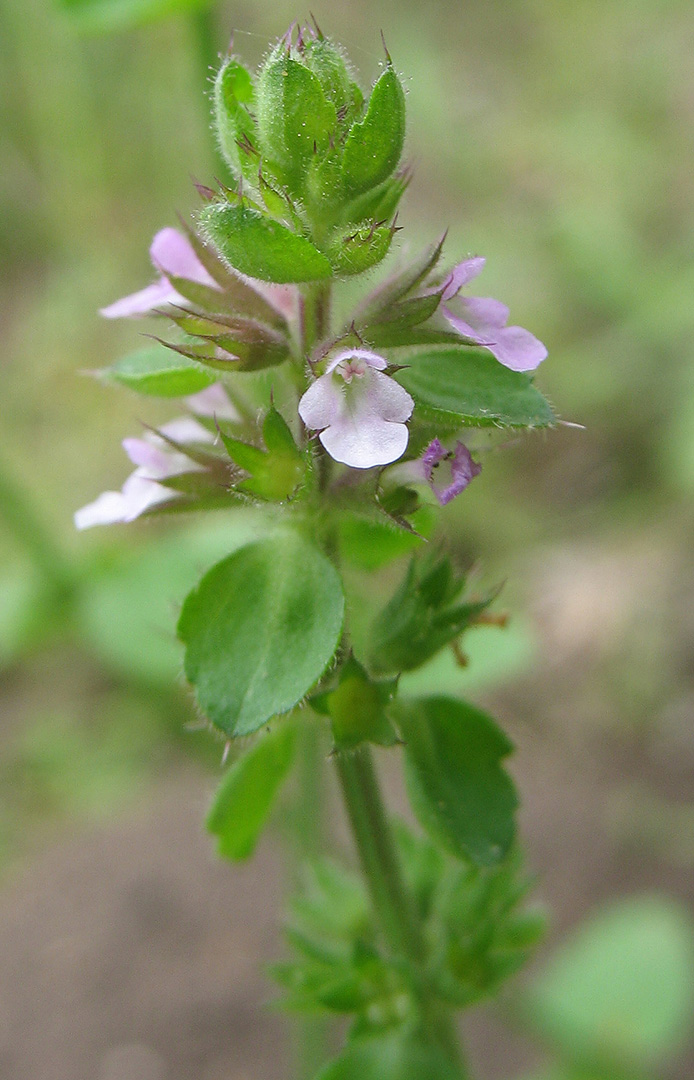Stachys
|
Family: Lamiaceae |
PLANT: Annual, biennial or mostly perennial herbs, mostly rhizomatous, usually pubescent; stems erect or decumbent, branched at base or along lower part of stem. LEAVES: mostly petiolate, the upper ones petiolate or sessile; blade mostly ovate or oblong; margins variously toothed or crenate to entire. INFLORESCENCE: verticillate, interrupted or spicate; bracts leafy. FLOWERS: sessile or subsessile; calyx zygomorphic or actinomorphic, enlarging somewhat in fruit, the lobes or teeth with spinose apices; corolla zygomorphic, 2 lipped, the tube longer or shorter than calyx, the upper lip concave or hooded and mostly entire, the lower lip (2 )3 lobed; stamens 4, included under upper lip or exserted, the anther sacs strongly divaricate with none abortive; ovary sessile, deeply lobed; stigma evenly 2 lobed. NUTLETS: obovate to oblong-ovoid, glabrous, smooth or roughened. x = mostly 8, 17 . NOTES: Ca. 300 spp., mostly in temperate areas world wide. (Greek: stachys = spike). Epling, C. 1934. Repert. Spec. Nov. Regni Veg. 80:1 73; Mulligan, G. A., and D. B. Munro. 1989. Naturaliste Can. (Rev. Ecol. Syst.) 116:35 51. REFERENCES: Christy, Charlotte M. 2003. Lamiaceae. J. Ariz. - Nev. Acad. Sci. Volume 35(2). Cal nearly regular, 5-10-nerved, the lobes triangular to nearly lanceolate, acute or aristate; cor strongly 2-lipped, the tube about equaling the cal, the upper lip subgaleately rounded, entire or emarginate, the lower lip spreading or deflexed, 3- lobed; stamens 4, ascending under the upper lip, the lower pair slightly the longer; nutlets ovoid or oblong, usually hairy; herbs, usually hairy, with anthocyanic to white or yellow fls in small, dense axillary cymes subtended by reduced lvs, forming a terminal, loose or dense, usually interrupted spike. Perhaps 200, mainly N. Temp. Spp. 2-8 are intergradient, and further study might lead to a more conservative treatment. Gleason, Henry A. & Cronquist, Arthur J. 1991. Manual of vascular plants of northeastern United States and adjacent Canada. lxxv + 910 pp. ©The New York Botanical Garden. All rights reserved. Used by permission. |

